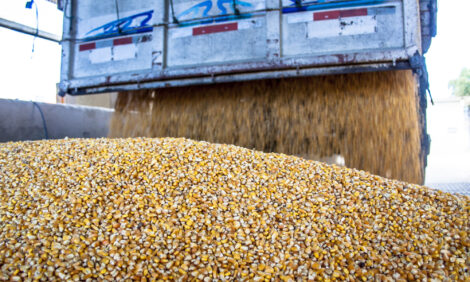



Keeping Mycoplasma under Control, Out of Your Herd
US - Over the last few years, Mycoplasma hyopneumoniae (Mhp) is increasingly threatening the health and efficiency of swine operations around the country. According to Brad Thacker, DVM, with Merck Animal Health, the occurrence of this bacterial disease is on the rise.
"We have seen an increase in the number of pigs diagnosed with mycoplasma pneumonia, over the last three to four years," notes Dr Thacker. "We keep a close eye on this organism, because when it combines with other pathogens, respiratory disease problems become more severe."
Mhp can act alone but usually combines with other pathogens like swine flu, circovirus and PRRS virus to cause the porcine respiratory disease complex (PRDC). Research has shown that even a relatively mild mycoplasma infection can make these viral infections more severe.
Dr Thacker recommends a two-dose vaccine programme to control the occurrence of Mhp in the herd.
"Without a doubt, controlling mycoplasma pneumonia is necessary for successful pig production and vaccination is the most cost-effective control method. However, not all vaccines and vaccination programs are equally effective. Recent slaughter check surveys conducted by Merck Animal Health clearly show differences in pneumonia control," notes Dr Thacker. "We've found the level of pneumonia to be greater in pigs vaccinated with one-dose mycoplasma vaccines compared to pigs vaccinated with two-dose vaccines."
Research also shows the level of pneumonia in pigs vaccinated once with a one-dose vaccine, such as MycoFLEX®, was significantly greater compared to pigs vaccinated twice with either Myco Silencer® ONCE or M+ Pac®. These findings may explain, in part, the reported increased level of mycoplasma pneumonia in the U.S. swine industry over the past few years. This increase appears to be temporarily associated with increased use of single-dose mycoplasma vaccines like MycoFLEX.
"The most effective vaccination schedule can vary from operation to operation," says Dr Thacker. He recommends using the two-dose protocol prior to or at weaning, then again in two to three weeks, ideally building immunity as early as possible in nursery pigs.
"The key to a successful Mhp control programme is to proactively monitor from both a disease and growth standpoint," says Dr Thacker. "By working closely with your veterinarian who understands mycoplasma disease pressure, and how it can occur simultaneously with other respiratory pathogens, you can assure a healthy herd that is as uniform and productive as possible."
Further ReadingFind out more information on M-Hyo by clicking here. |








